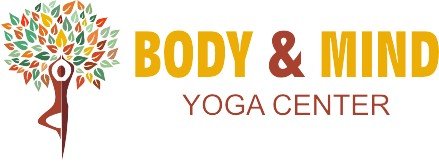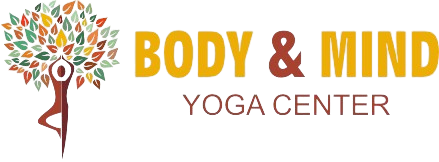Prenatal Yoga For Third Trimester Pelvic Pain
Prenatal Yoga For Third Trimester Pelvic Pain Pregnancy is a beautiful and transformative journey, but it’s not without its share of physical discomforts and emotional ups and downs. From backaches and bloating to fatigue, nausea, and mood swings—many women experience a variety of challenges across all three trimesters. The good news? Prenatal yoga offers a safe, natural, and effective way to ease these common discomforts while supporting your overall well-being. When practiced mindfully under expert guidance, yoga can relieve tension, improve flexibility, calm the mind, and prepare the body for labor and delivery. Understanding the Aches and Pains of Pregnancy Pregnancy is a time of incredible transformation, and with it comes a host of physical changes that can often lead to discomfort. As your baby grows, your body adapts to support the extra weight and shifting balance. One of the most common sources of discomfort is back pain, caused by the shift in your center of gravity and the added strain on your lower back and surrounding muscles. Additionally, many women experience pelvic pain, shoulder and neck tension, and swollen ankles as pregnancy progresses. These symptoms are often intensified by hormonal changes that soften the ligaments and joints to prepare for childbirth. While these changes are completely natural, they can lead to instability and aches in various parts of the body, making everyday tasks more challenging. Recognizing these discomforts as a normal part of pregnancy is the first step toward managing them effectively. And that’s where prenatal yoga becomes an essential tool for relief and balance. Read More: 5 Safe Yoga Poses For Pregnant Women To Stay Strong And Relaxed Here are 5 Yoga Poses for Pregnancy to Relieve Aches & Pains Cat-Cow Pose (Marjaryasana/Bitilasana) This gentle, flowing movement between arching and rounding the spine helps relieve back pain, reduce tension in the spine and shoulders, and improve posture and breathing—making it especially helpful as the belly grows. How to Do It: Start on your hands and knees in a tabletop position, with wrists under shoulders and knees under hips. Inhale as you drop your belly, lift your chest, and tilt your tailbone upward (Cow Pose). Exhale as you round your back, tucking the chin toward the chest and tailbone under (Cat Pose). Continue flowing between Cat and Cow with each breath, moving gently. Repeat for 5–10 rounds, moving slowly and mindfully. Read More: 5 Prenatal Yoga Poses For Second Trimester Triangle Pose (Trikonasana) Triangle Pose stretches the sides of the body, hips, and legs, improving digestion, circulation, and balance. It helps relieve tension in the lower back and opens the chest for easier breathing. How to Do It: Stand with feet wide apart; turn your right foot out 90 degrees and left foot slightly in. Extend your arms parallel to the floor, palms down. Inhale and reach your right arm forward, then lower it to your shin or a block; lift the left arm up. Keep your chest open and look up or straight ahead, depending on your neck comfort. Hold for 3–5 breaths, then switch sides. Warrior II Pose (Virabhadrasana II) Warrior II strengthens the legs, hips, and back, while also opening the chest and shoulders. It helps improve stamina, stability, and mental focus—ideal preparation for childbirth. How to Do It: Stand with feet about 3–4 feet apart; turn right foot out, left foot slightly in. Raise arms to shoulder height, palms facing down. Bend your right knee directly over the ankle, keeping the left leg straight. Gaze over your right hand, keeping shoulders relaxed and spine tall. Hold for 5–8 breaths, then repeat on the other side. Read More: 11 Yoga Poses For PCOS And Hormonal Imbalance Butterfly Pose (Baddha Konasana) This seated stretch opens the hips, inner thighs, and pelvic floor, making it especially beneficial during pregnancy. It also helps relax the lower back and improves circulation in the pelvic region. How to Do It: Sit on the floor with a straight spine and bring the soles of your feet together. Let your knees drop gently toward the floor. Hold your feet with your hands, keeping your spine long. Gently flap your knees up and down, or hold still and breathe deeply. Stay in the pose for 1–2 minutes, breathing steadily. Legs Up the Wall (Viparita Karani) This restorative pose improves circulation, reduces swelling in the feet and legs, and calms the nervous system. It’s especially helpful for relieving fatigue, anxiety, and lower back pressure. How to Do It: Sit sideways next to a wall and gently swing your legs up as you lie down on your back. Adjust your hips close to the wall and rest your arms by your sides, palms up. Use a cushion or bolster under your hips if needed for support. Close your eyes and breathe deeply, allowing the body to fully relax. Stay for 5–10 minutes, then slowly roll to your side to come out of the pose. Embrace a Healthier, More Comfortable Pregnancy with Yoga Pregnancy brings moments of joy, excitement, and transformation—but it also comes with its fair share of physical discomforts. Fortunately, practicing gentle and safe yoga can offer tremendous relief from common pregnancy-related aches and pains like backaches, pelvic pressure, fatigue, and swelling. Yoga poses shared above are not only simple and effective but also adaptable to all three trimesters. When practiced regularly and under proper guidance, they can help you feel stronger, more relaxed, and better prepared—both physically and emotionally—for childbirth. Always listen to your body, move mindfully, and consult with your healthcare provider before starting any new exercise routine during pregnancy. And most importantly, give yourself grace as you nurture both your body and your baby during this beautiful journey. Join us at Body and Mind Yoga Center, where our specialized prenatal yoga classes in Dubai provide a nurturing environment for mothers-to-be to connect with their bodies and their growing babies. Share this post : Previous PostNext Post More than 2 results are available in the PRO version (This notice is only visible to admin users) Most Recent Posts
5 Yoga Poses for Menstrual Cramps
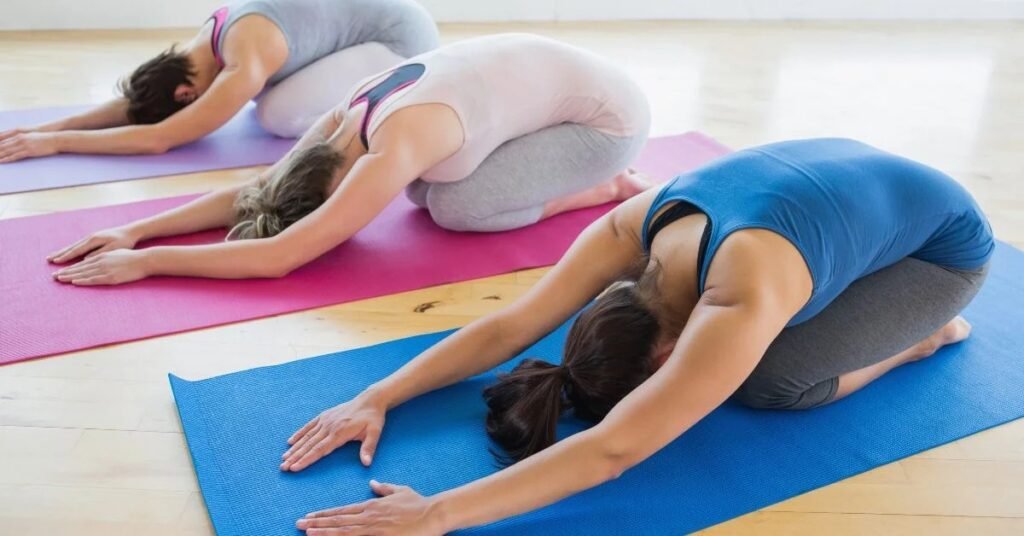
5 Yoga Poses for Menstrual Cramps Menstrual cramps are a common discomfort experienced by many women during their monthly cycle. These cramps can range from mild to severe and often disrupt daily activities. While over-the-counter medications can provide relief, many women seek natural remedies to alleviate menstrual pain. Yoga, with its gentle stretches and calming effects, offers a holistic approach to managing menstrual cramps. Easy Yoga Poses for Menstrual Cramp Relief Child’s Pose (Balasana): Child’s Pose is a restorative yoga pose that gently stretches the lower back, hips, and thighs while promoting relaxation and stress relief. How to Do It: Start by kneeling on the yoga mat with your big toes touching and knees apart. Slowly lower your torso down towards the mat, extending your arms in front of you or placing them alongside your body. Rest your forehead on the mat and focus on deep breathing, allowing your belly to expand with each inhale and contract with each exhale. Hold the pose for 1-3 minutes, gradually releasing any tension in the body. Child’s Pose helps relieve tension in the pelvic area and encourages blood flow to the reproductive organs, providing relief from menstrual cramps. Supine Twist (Supta Matsyendrasana): The Supine Twist is a gentle spinal twist that helps release tension in the back, hips, and abdomen, making it an excellent yoga pose for menstrual cramps. How to Do It: Lie on your back with your knees bent and feet flat on the mat. Extend your arms out to the sides at shoulder height, palms facing down. Exhale as you lower both knees to the left side of your body, keeping your shoulders grounded. Turn your head to the right and gaze towards your right hand. Hold the pose for 1-2 minutes, focusing on deep, rhythmic breathing. Repeat on the opposite side. Supine Twist helps relieve tension in the abdominal muscles and improves digestion, reducing bloating and discomfort associated with menstrual cramps. Cobra Pose (Bhujangasana): Cobra Pose is a gentle backbend that stretches the abdomen, chest, and shoulders while strengthening the spine. This pose can help alleviate menstrual cramps by increasing circulation to the pelvic region. How to Do It: Lie on your stomach with your palms flat on the mat next to your chest. Press into your palms as you lift your chest off the mat, keeping your elbows close to your body. Lengthen through the crown of your head and engage your back muscles. Hold the pose for 15-30 seconds, breathing deeply. Exhale as you release back down to the mat. Cobra Pose not only relieves menstrual cramps but also helps improve posture and alleviate back pain associated with menstruation. Bridge Pose (Setu Bandhasana): Bridge Pose is a gentle inversion that stretches the spine, chest, and neck while strengthening the back, buttocks, and thighs. This pose helps relieve menstrual cramps by increasing blood flow to the pelvic area and reducing stress. How to Do It: Lie on your back with your knees bent and feet hip-width apart, heels close to your buttocks. Press into your feet as you lift your hips towards the ceiling, engaging your glutes and thighs. Interlace your fingers beneath your back and press your arms into the mat for support. Hold the pose for 30 seconds to 1 minute, breathing deeply. Exhale as you slowly lower your hips back down to the mat. Bridge Pose also stimulates the thyroid and abdominal organs, promoting hormonal balance and relieving menstrual discomfort. Legs-Up-the-Wall Pose (Viparita Karani): Legs-Up-the-Wall Pose is a gentle inversion that promotes relaxation and improves circulation throughout the body. This pose can help alleviate menstrual cramps by reducing tension in the pelvic area and calming the nervous system. How to Do It: Sit sideways next to a wall with your hips touching the wall. Lie on your back and swing your legs up against the wall, keeping your buttocks close to the wall. Extend your arms out to the sides with palms facing up, or place your hands on your belly. Close your eyes and focus on deep breathing, allowing your body to relax completely. Hold the pose for 5-10 minutes, letting go of any tension with each exhale. Legs-Up-the-Wall Pose helps reduce inflammation and swelling in the legs and feet, providing relief from menstrual bloating and discomfort. Conclusion: Yoga offers a natural and effective way to manage menstrual cramps while promoting overall health and well-being. By incorporating these five yoga poses into your regular practice, you can find relief from menstrual discomfort and cultivate a deeper connection between mind, body, and spirit. Remember to listen to your body and modify the poses as needed to suit your individual needs and limitations. With consistent practice, you can harness the healing power of yoga to ease menstrual cramps and enhance your quality of life. Embrace these yoga poses regularly to foster a harmonious blend of strength, flexibility, and tranquility in your wellness routine. Want to learn Yoga? Visit Body and Mind Yoga Center, we provide the best yoga classes for women in Dubai with a variety of lessons suited to fit your needs and preferences. Share this post : Previous PostNext Post More than 2 results are available in the PRO version (This notice is only visible to admin users) Most Recent Posts All Posts Yoga Yoga For Kids Yoga For Womens How Prenatal Yoga Helps Relieve Constipation During Pregnancy? How Yoga Strengthens Pelvic Muscles for Childbirth? 5 Effective Yoga Poses for Pregnant Women Category Have Question Looking for the best yoga classes in Dubai? Visit our state-of-the-art yoga studio and center in Dubai for a rejuvenating and transformative experience. Call Us Now
5 Best Yoga Poses for Immediate Acidity Relief

6 Yoga Poses To Practice Daily For Better Heart Health Heart health is essential for overall well-being. It’s not just about pumping blood; the heart serves as the core of our existence. Yoga, an ancient practice originating in India, offers a holistic approach to maintaining cardiovascular health. Through mindful movement, breath work, and meditation, yoga can significantly improve heart health. How Does Yoga Improve and Optimize Heart Health? Yoga enhances heart health through various mechanisms. Its emphasis on deep yogic breathing and relaxation techniques reduces stress and lowers blood pressure, benefiting cardiac function. Yoga postures promote circulation and oxygenation of tissues, improving cardiovascular efficiency. Regular practice also enhances flexibility, strengthens muscles, and supports weight management, all of which contribute to a healthier heart. Here are 6 Yoga Poses For Heart Health 1. Tadasana (Mountain Pose): Tadasana improves posture, increases lung capacity, and promotes circulation, all of which contribute to a healthier heart. How to Do It: 1.Stand tall with your feet together or hip-width apart, whichever is more comfortable. 2.Distribute your weight evenly on both feet. 3.Engage your thigh muscles, lift your kneecaps, and gently tuck your tailbone. 4.Lengthen your spine, roll your shoulders back and down, and extend your arms alongside your body with palms facing forward or clasped together. 2. Uttanasana (Forward Fold): Uttanasana calms the mind, reduces anxiety, and lowers blood pressure, all of which support heart health. How to Do It: 1.From Tadasana, exhale and hinge at your hips to fold forward. 2.Keep your spine long as you fold. 3.If your hamstrings are tight, you can bend your knees slightly. 4.Allow your head and neck to relax as you hang in this position. 5.You can hold onto your shins, ankles, or the floor, depending on your flexibility. 3. Adho Mukha Svanasana (Downward-Facing Dog): Adho Mukha Svanasana improves circulation, relieves stress, and energizes the body, making it an excellent pose for heart health. How to Do It: 1.Start on your hands and knees (tabletop position) with your wrists under your shoulders and knees under your hips. 2.Spread your fingers wide and press firmly into the mat. 3.Lift your hips up and back, straightening your arms and legs to form an inverted V shape. 4.Keep your heels reaching toward the floor, but it’s okay if they don’t touch. 5.Lengthen your spine and draw your shoulder blades down your back. 6.Relax your head and neck, letting them hang freely. 4. Setu Bandhasana (Bridge Pose): Setu Bandhasana stimulates the thyroid gland, improves digestion, and promotes circulation, all of which contribute to a healthy heart. How to Do It: 1.Lie on your back with your knees bent and feet hip-width apart, flat on the floor. 2.Keep your arms alongside your body with palms facing down. 3.Press your feet and arms firmly into the mat as you lift your hips toward the ceiling. 4.Roll your shoulders under and interlace your fingers, if possible, beneath your back. 5.Keep your thighs parallel to each other and engage your glutes and core. 6.Hold the pose for a few breaths, then slowly release your hands and lower your spine back to the floor. 5. Bhujangasana (Cobra Pose): Bhujangasana improves spine flexibility, alleviates stress, and stimulates abdominal organs, promoting better circulation and heart health. How to Do It: 1.Lie on your stomach with your legs extended and the tops of your feet pressing into the mat. 2.Place your palms flat on the mat under your shoulders, elbows close to your body. 3.Inhale as you press into your hands and lift your chest and head off the mat, keeping your elbows slightly bent. 4.Roll your shoulders back and down, opening your chest. 5.Keep your pubic bone grounded and engage your legs. 6.Hold the pose for a few breaths, then exhale as you gently release back down to the mat. 6. Savasana (Corpse Pose): Savasana reduces stress, promotes deep relaxation, and calms the nervous system, all of which support heart health and overall well-being. How to Do It: Lie flat on your back with your arms and legs slightly apart, palms facing up. Close your eyes and allow your body to completely relax. Focus on your breath and let go of any tension in your muscles. Stay in Savasana for a few minutes, allowing your body and mind to rejuvenate. Conclusion: Yoga offers a powerful tool for improving heart health and overall vitality. By incorporating these yoga poses into your daily routine, you can support circulation, reduce stress, and cultivate a deeper connection to your heart center. Remember to practice with mindfulness and awareness, honoring your body’s unique needs and limitations. As you continue to nurture your heart through yoga, may you experience greater health, balance, and joy in every beat. Join us at Body and Mind Yoga Center for an enriching experience that harmonizes body and mind. Your path to wellness begins here. We provide the best Yoga Classes In Dubai with a variety of lessons suited to fit your needs and preferences. Share this post : Previous PostNext Post More than 2 results are available in the PRO version (This notice is only visible to admin users) Most Recent Posts All Posts 6 Yoga Poses To Practice Daily For Better Heart Health Top 5 Yoga Poses for Stronger Legs 5 Yoga Poses for Better Digestion Category Have Question Looking for the best yoga classes in Dubai? Visit our state-of-the-art yoga studio and center in Dubai for a rejuvenating and transformative experience. Call Us Now
6 Yoga Poses To Practice Daily For Better Heart Health
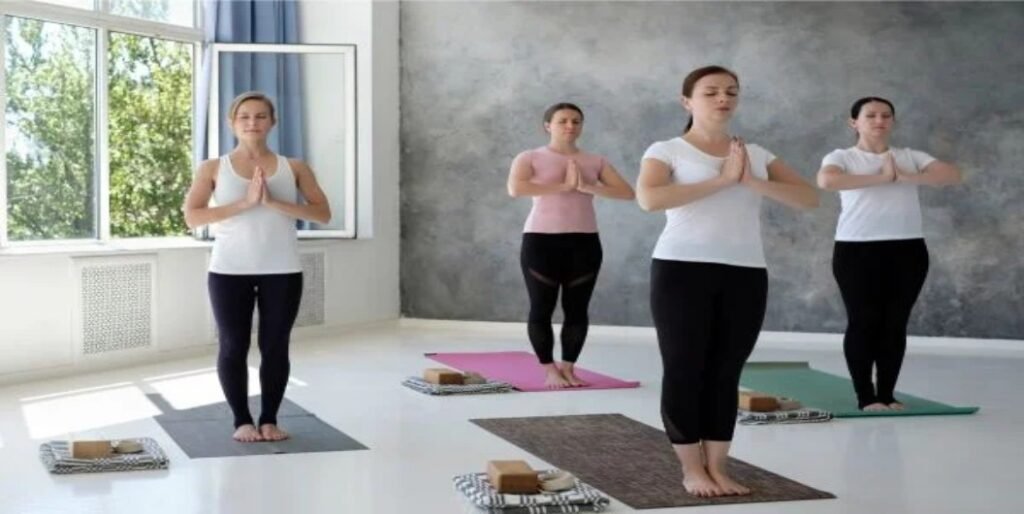
6 Yoga Poses To Practice Daily For Better Heart Health Heart health is essential for overall well-being. It’s not just about pumping blood; the heart serves as the core of our existence. Yoga, an ancient practice originating in India, offers a holistic approach to maintaining cardiovascular health. Through mindful movement, breath work, and meditation, yoga can significantly improve heart health. How Does Yoga Improve and Optimize Heart Health? Yoga enhances heart health through various mechanisms. Its emphasis on deep yogic breathing and relaxation techniques reduces stress and lowers blood pressure, benefiting cardiac function. Yoga postures promote circulation and oxygenation of tissues, improving cardiovascular efficiency. Regular practice also enhances flexibility, strengthens muscles, and supports weight management, all of which contribute to a healthier heart. Here are 6 Yoga Poses For Heart Health 1. Tadasana (Mountain Pose): Tadasana improves posture, increases lung capacity, and promotes circulation, all of which contribute to a healthier heart. How to Do It: 1.Stand tall with your feet together or hip-width apart, whichever is more comfortable. 2.Distribute your weight evenly on both feet. 3.Engage your thigh muscles, lift your kneecaps, and gently tuck your tailbone. 4.Lengthen your spine, roll your shoulders back and down, and extend your arms alongside your body with palms facing forward or clasped together. 2. Uttanasana (Forward Fold): Uttanasana calms the mind, reduces anxiety, and lowers blood pressure, all of which support heart health. How to Do It: 1.From Tadasana, exhale and hinge at your hips to fold forward. 2.Keep your spine long as you fold. 3.If your hamstrings are tight, you can bend your knees slightly. 4.Allow your head and neck to relax as you hang in this position. 5.You can hold onto your shins, ankles, or the floor, depending on your flexibility. 3. Adho Mukha Svanasana (Downward-Facing Dog): Adho Mukha Svanasana improves circulation, relieves stress, and energizes the body, making it an excellent pose for heart health. How to Do It: 1.Start on your hands and knees (tabletop position) with your wrists under your shoulders and knees under your hips. 2.Spread your fingers wide and press firmly into the mat. 3.Lift your hips up and back, straightening your arms and legs to form an inverted V shape. 4.Keep your heels reaching toward the floor, but it’s okay if they don’t touch. 5.Lengthen your spine and draw your shoulder blades down your back. 6.Relax your head and neck, letting them hang freely. 4. Setu Bandhasana (Bridge Pose): Setu Bandhasana stimulates the thyroid gland, improves digestion, and promotes circulation, all of which contribute to a healthy heart. How to Do It: 1.Lie on your back with your knees bent and feet hip-width apart, flat on the floor. 2.Keep your arms alongside your body with palms facing down. 3.Press your feet and arms firmly into the mat as you lift your hips toward the ceiling. 4.Roll your shoulders under and interlace your fingers, if possible, beneath your back. 5.Keep your thighs parallel to each other and engage your glutes and core. 6.Hold the pose for a few breaths, then slowly release your hands and lower your spine back to the floor. 5. Bhujangasana (Cobra Pose): Bhujangasana improves spine flexibility, alleviates stress, and stimulates abdominal organs, promoting better circulation and heart health. How to Do It: 1.Lie on your stomach with your legs extended and the tops of your feet pressing into the mat. 2.Place your palms flat on the mat under your shoulders, elbows close to your body. 3.Inhale as you press into your hands and lift your chest and head off the mat, keeping your elbows slightly bent. 4.Roll your shoulders back and down, opening your chest. 5.Keep your pubic bone grounded and engage your legs. 6.Hold the pose for a few breaths, then exhale as you gently release back down to the mat. 6. Savasana (Corpse Pose): Savasana reduces stress, promotes deep relaxation, and calms the nervous system, all of which support heart health and overall well-being. How to Do It: Lie flat on your back with your arms and legs slightly apart, palms facing up. Close your eyes and allow your body to completely relax. Focus on your breath and let go of any tension in your muscles. Stay in Savasana for a few minutes, allowing your body and mind to rejuvenate. Conclusion: Yoga offers a powerful tool for improving heart health and overall vitality. By incorporating these yoga poses into your daily routine, you can support circulation, reduce stress, and cultivate a deeper connection to your heart center. Remember to practice with mindfulness and awareness, honoring your body’s unique needs and limitations. As you continue to nurture your heart through yoga, may you experience greater health, balance, and joy in every beat. Join us at Body and Mind Yoga Center for an enriching experience that harmonizes body and mind. Your path to wellness begins here. We provide the best Yoga Classes In Dubai with a variety of lessons suited to fit your needs and preferences. Share this post : Previous PostNext Post More than 2 results are available in the PRO version (This notice is only visible to admin users) Most Recent Posts All Posts 6 Yoga Poses To Practice Daily For Better Heart Health Top 5 Yoga Poses for Stronger Legs 5 Yoga Poses for Better Digestion Category Have Question Looking for the best yoga classes in Dubai? Visit our state-of-the-art yoga studio and center in Dubai for a rejuvenating and transformative experience. Call Us Now
Top 5 Yoga Poses for Stronger Legs
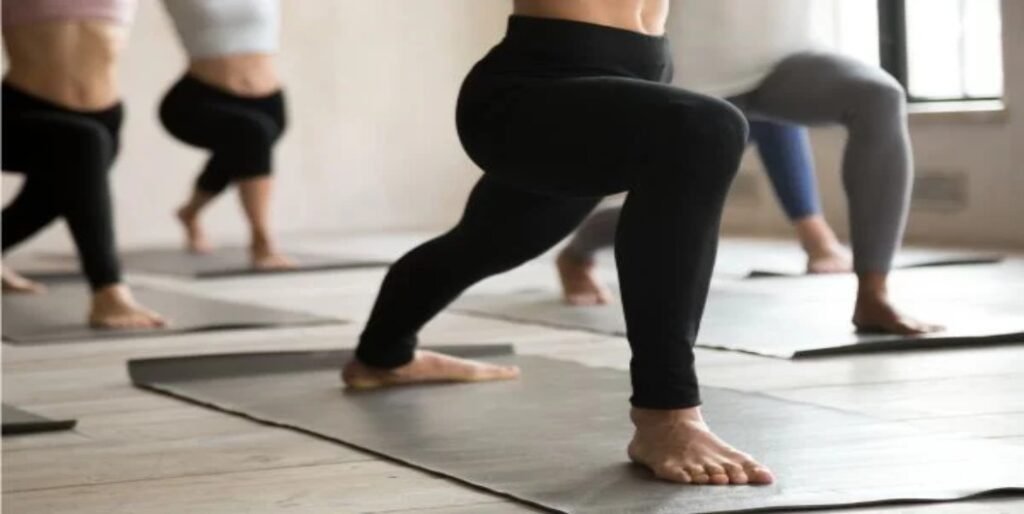
5 Yoga Poses for Better Digestion Good digestion is key to feeling good. When our bodies digest food well, we have more energy and feel healthier. Good digestion is essential for overall health and well-being. Yoga, with its focus on movement, breathing, and mindfulness can be a powerful tool to improve digestion. It’s not just about stretching and bending; yoga connects our minds and bodies. This connection can have a positive effect on how our digestive system works. Let’s explore how yoga poses can support better digestion and overall well-being. Here are 5 Yoga Poses for Better Digestion Marjaryasana-Bitilasana (Cat-Cow): This dynamic duo of poses gently massages the digestive organs, promoting better digestion by stimulating the abdominal region. The arching and rounding of the spine in Cat-Cow pose can help alleviate bloating and improve the flow of digestive juices, fostering a healthier gut environment. How to Do It Start on your hands and knees, with your wrists directly under your shoulders and your knees directly under your hips. Inhale as you arch your back, lifting your tailbone and chest towards the ceiling (Cow Pose). Exhale as you round your back, tucking your chin to your chest and drawing your belly button towards your spine (Cat Pose). Continue flowing between Cat and Cow poses, coordinating your breath with your movement, for several rounds. Adho Mukha Svanasana (Downward-Facing Dog Pose): Downward-Facing Dog encourages blood circulation to the digestive organs, which can enhance their function. Also, this pose stretches the abdomen and creates space in the torso, potentially relieving discomfort associated with indigestion and gas. How to Do It Begin on your hands and knees, with your wrists slightly in front of your shoulders. Tuck your toes under, lift your hips up and back, and straighten your arms and legs to form an inverted V shape with your body. Press your hands firmly into the ground, spread your fingers wide, and engage your core muscles. Relax your head and neck, and hold the pose for several breaths, focusing on lengthening your spine and opening up your chest. Utthita Trikonasana (Extended Triangle Pose): By stretching the sides of the body, Extended Triangle Pose aids in relieving digestive discomfort and improving overall digestion. The elongation of the torso in this pose can help alleviate tension in the abdominal area, fostering a sense of openness and ease in the digestive system. How to Do It Start in a standing position with your feet about 3-4 feet apart, facing forward. Turn your right foot out 90 degrees and your left foot slightly inwards. Extend your arms out to the sides at shoulder height. Hinge at your right hip and reach your right hand towards your right ankle or shin, while extending your left arm up towards the ceiling. Keep your chest and hips open as you gaze towards your left hand. Hold the pose for several breaths, then switch sides. Parivrtta Trikonasana (Revolved Triangle Pose): Revolved Triangle Pose wrings out toxins from the digestive organs and stimulates digestion by creating a twisting motion in the torso. This pose helps to increase circulation to the abdominal organs, promoting detoxification and improved digestive function. How to Do It Begin in a standing position with your feet about hip-width apart. Step your right foot back about 3-4 feet and square your hips towards the front of the mat. Extend your arms out to the sides at shoulder height. Hinge at your hips and reach your left hand towards the outside of your right foot, while extending your right arm up towards the ceiling. Keep your chest open and gaze towards your right hand. Hold the pose for several breaths, then switch sides. Setu Bandha Sarvangasana (Bridge Pose): Bridge Pose can help alleviate digestive issues by gently compressing the abdominal region, which may aid in stimulating digestion and relieving bloating. The posture also helps to relax the body and reduce stress, which can contribute to better overall digestion and gut health. How to Do It Lie on your back with your knees bent and feet hip-width apart, flat on the floor. Press your feet into the ground as you lift your hips towards the ceiling. Interlace your fingers underneath your hips and roll your shoulders underneath you. Keep your thighs parallel to each other and engage your glutes and core muscles. Hold the pose for several breaths, then release by slowly lowering your hips back down to the floor. Conclusion: Incorporating these yoga poses into your daily routine can have a positive impact on your digestive health. Remember to practice with mindfulness, focusing on breath awareness and proper alignment. By nurturing your body through yoga, you can support optimal digestion and overall well-being. Embrace these poses to cultivate a harmonious relationship between mind, body, and gut for improved digestive function. Join us at Body and Mind Yoga Center for an enriching experience that harmonizes body and mind. Your path to wellness begins here. We provide the best Yoga Classes In Dubai with a variety of lessons suited to fit your needs and preferences. Share this post : Previous PostNext Post More than 2 results are available in the PRO version (This notice is only visible to admin users) Most Recent Posts All Posts 5 Yoga Poses for Better Digestion 5 Yoga Asanas for Headache and Migraine Relief 5 Best Yoga Poses for Back Pain Category Have Question Looking for the best yoga classes in Dubai? Visit our state-of-the-art yoga studio and center in Dubai for a rejuvenating and transformative experience. Call Us Now
5 Yoga Poses for Better Digestion
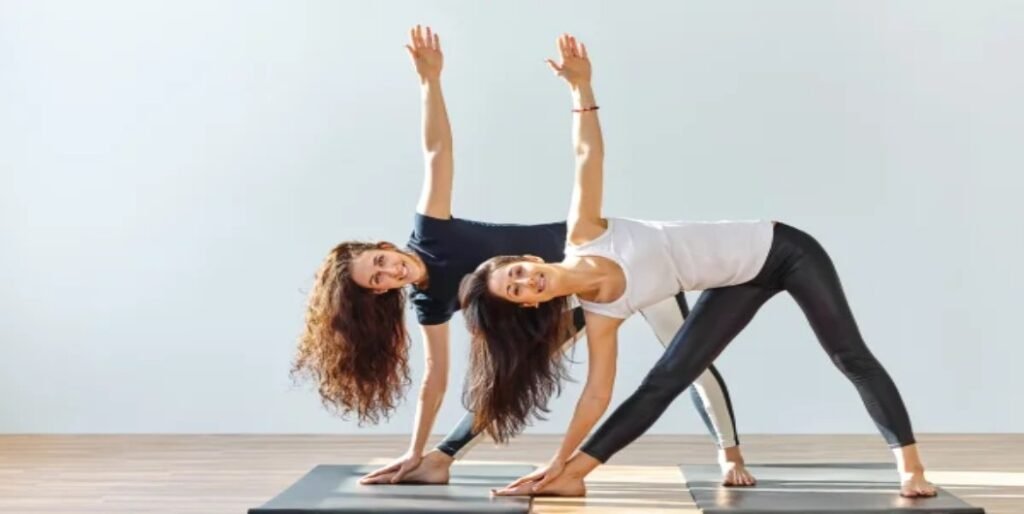
5 Yoga Poses for Better Digestion Good digestion is key to feeling good. When our bodies digest food well, we have more energy and feel healthier. Good digestion is essential for overall health and well-being. Yoga, with its focus on movement, breathing, and mindfulness can be a powerful tool to improve digestion. It’s not just about stretching and bending; yoga connects our minds and bodies. This connection can have a positive effect on how our digestive system works. Let’s explore how yoga poses can support better digestion and overall well-being. Here are 5 Yoga Poses for Better Digestion Marjaryasana-Bitilasana (Cat-Cow): This dynamic duo of poses gently massages the digestive organs, promoting better digestion by stimulating the abdominal region. The arching and rounding of the spine in Cat-Cow pose can help alleviate bloating and improve the flow of digestive juices, fostering a healthier gut environment. How to Do It Start on your hands and knees, with your wrists directly under your shoulders and your knees directly under your hips. Inhale as you arch your back, lifting your tailbone and chest towards the ceiling (Cow Pose). Exhale as you round your back, tucking your chin to your chest and drawing your belly button towards your spine (Cat Pose). Continue flowing between Cat and Cow poses, coordinating your breath with your movement, for several rounds. Adho Mukha Svanasana (Downward-Facing Dog Pose): Downward-Facing Dog encourages blood circulation to the digestive organs, which can enhance their function. Also, this pose stretches the abdomen and creates space in the torso, potentially relieving discomfort associated with indigestion and gas. How to Do It Begin on your hands and knees, with your wrists slightly in front of your shoulders. Tuck your toes under, lift your hips up and back, and straighten your arms and legs to form an inverted V shape with your body. Press your hands firmly into the ground, spread your fingers wide, and engage your core muscles. Relax your head and neck, and hold the pose for several breaths, focusing on lengthening your spine and opening up your chest. Utthita Trikonasana (Extended Triangle Pose): By stretching the sides of the body, Extended Triangle Pose aids in relieving digestive discomfort and improving overall digestion. The elongation of the torso in this pose can help alleviate tension in the abdominal area, fostering a sense of openness and ease in the digestive system. How to Do It Start in a standing position with your feet about 3-4 feet apart, facing forward. Turn your right foot out 90 degrees and your left foot slightly inwards. Extend your arms out to the sides at shoulder height. Hinge at your right hip and reach your right hand towards your right ankle or shin, while extending your left arm up towards the ceiling. Keep your chest and hips open as you gaze towards your left hand. Hold the pose for several breaths, then switch sides. Parivrtta Trikonasana (Revolved Triangle Pose): Revolved Triangle Pose wrings out toxins from the digestive organs and stimulates digestion by creating a twisting motion in the torso. This pose helps to increase circulation to the abdominal organs, promoting detoxification and improved digestive function. How to Do It Begin in a standing position with your feet about hip-width apart. Step your right foot back about 3-4 feet and square your hips towards the front of the mat. Extend your arms out to the sides at shoulder height. Hinge at your hips and reach your left hand towards the outside of your right foot, while extending your right arm up towards the ceiling. Keep your chest open and gaze towards your right hand. Hold the pose for several breaths, then switch sides. Setu Bandha Sarvangasana (Bridge Pose): Bridge Pose can help alleviate digestive issues by gently compressing the abdominal region, which may aid in stimulating digestion and relieving bloating. The posture also helps to relax the body and reduce stress, which can contribute to better overall digestion and gut health. How to Do It Lie on your back with your knees bent and feet hip-width apart, flat on the floor. Press your feet into the ground as you lift your hips towards the ceiling. Interlace your fingers underneath your hips and roll your shoulders underneath you. Keep your thighs parallel to each other and engage your glutes and core muscles. Hold the pose for several breaths, then release by slowly lowering your hips back down to the floor. Conclusion: Incorporating these yoga poses into your daily routine can have a positive impact on your digestive health. Remember to practice with mindfulness, focusing on breath awareness and proper alignment. By nurturing your body through yoga, you can support optimal digestion and overall well-being. Embrace these poses to cultivate a harmonious relationship between mind, body, and gut for improved digestive function. Join us at Body and Mind Yoga Center for an enriching experience that harmonizes body and mind. Your path to wellness begins here. We provide the best Yoga Classes In Dubai with a variety of lessons suited to fit your needs and preferences. Share this post : Previous PostNext Post More than 2 results are available in the PRO version (This notice is only visible to admin users) Most Recent Posts All Posts 5 Yoga Poses for Better Digestion 5 Yoga Asanas for Headache and Migraine Relief 5 Best Yoga Poses for Back Pain Category Have Question Looking for the best yoga classes in Dubai? Visit our state-of-the-art yoga studio and center in Dubai for a rejuvenating and transformative experience. Call Us Now
5 Yoga Asanas for Headache and Migraine Relief
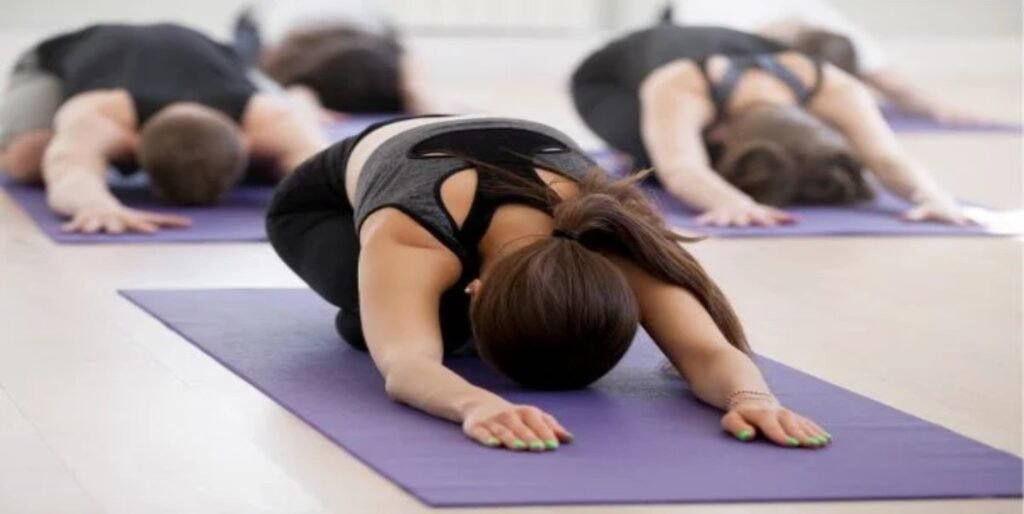
5 Best Yoga Poses for Back Pain Are you among the countless individuals seeking relief from persistent back pain? Look no further than the ancient practice of yoga. Harnessing the power of mindful movement and breath, yoga offers a myriad of poses specifically designed to alleviate discomfort and promote spinal health. In this guide, we’ll explore five of the most effective yoga poses for back pain, each offering unique benefits and gentle relief. Let’s embark on a journey towards greater flexibility, strength, and well-being. Here are 5 Best Yoga Poses for Back Pain Adho Mukha Svanasana (Downward-Facing Dog): Downward-Facing Dog, known as Adho Mukha Svanasana in Sanskrit, is a foundational yoga pose that stretches and strengthens the entire body, particularly the spine, shoulders, and hamstrings. By elongating the spine while drawing the hips upward and back, this pose helps improve posture, relieve tension, and promote a sense of rejuvenation and vitality. How to Do It: Start on hands and knees, wrists under shoulders, knees under hips. Tuck toes, exhale, lift hips for inverted V-shape. Press hands firmly, spread fingers, press heels down. Lengthen spine, relax neck, draw belly to thighs. Hold. Release by bending knees, return to starting position. Cat-Cow Pose (Marjaryasana-Bitilasana): Cat-Cow Pose, often practiced as a flowing sequence, gently mobilizes and stretches the spine while synchronizing breath with movement. The arching and rounding of the back in Cat-Cow helps alleviate tension, improve flexibility, and promote spinal health. How to Do It: Start on hands and knees, wrists under shoulders, knees under hips. Inhale, arch back into Cow Pose, lifting belly and gaze. Exhale, round back into Cat Pose, tucking chin and drawing belly in. Flow between Cat and Cow, syncing with breath. Inhale to Cow, exhale to Cat, repeating for flexibility. Child’s Pose (Balasana): Child’s Pose, or Balasana in Sanskrit, is a resting yoga posture that provides a gentle stretch to the back, hips, thighs, and ankles while promoting relaxation and stress relief. By surrendering the body to the floor and allowing the breath to deepen, Child’s Pose encourages a sense of calm and introspection during practice. How to Do It: Start on hands and knees, wrists under shoulders, knees under hips. Exhale, lower hips towards heels, rest forehead on mat or cushion. Extend arms forward, palms flat or facing up. Relax body, let chest sink, breathe slowly. Hold pose, focus on releasing tension in back, shoulders, and hips. Read More : 5 Yoga Asanas For Headache And Migraine Relief Cobra Pose (Bhujangasana): Cobra Pose, or Bhujangasana in Sanskrit, is a backbend yoga posture that strengthens the muscles of the back, arms, and shoulders while opening the chest and promoting spinal flexibility. By gently lifting the chest and engaging the back muscles, This yoga pose helps reduce stress, improve posture and stimulate energy flow throughout the body. How to Do It: Lie on your stomach with your legs extended and the tops of your feet pressing into the mat. Place your palms flat on the mat under your shoulders, keeping your elbows close to your body. Inhale, lift chest and head using back muscles, keep pelvis down. Press into hands, lift chest higher, elongate spine, draw shoulders away from ears. Hold, then exhale to release back down. Triangle Pose (Trikonasana): Triangle Pose, also known as Trikonasana in Sanskrit, is a standing yoga posture that stretches the hamstrings, hips, groins, and spine while strengthening the legs and core muscles. By extending the torso and reaching towards the sky with one arm while grounding through the feet, Triangle Pose cultivates balance, stability, and a sense of expansiveness in the body and mind. How to Do It: Stand at the top of your mat, feet 3-4 feet apart, facing forward. Turn right foot 90 degrees out, left foot slightly inward, heels aligned. Inhale, extend arms to shoulder height; exhale, reach right hand to shin, ankle, or block. Extend left arm up, creating a straight line from left foot to fingertips. Keep chest open, gaze at left thumb, hold, then inhale back to standing and repeat on the other side. In conclusion, incorporating these five yoga poses into your routine can be a transformative journey towards a healthier, pain-free back. By embracing the ancient wisdom of yoga, you not only address physical discomfort but also nurture a harmonious balance between your body and mind. Whether you’re a seasoned yoga practitioner or a beginner, these poses offer a gateway to improved flexibility, strengthened muscles, and a renewed sense of well-being. Embrace these yoga poses regularly to foster a harmonious blend of strength, flexibility, and tranquility in your wellness routine. Want to learn Yoga? Visit Body and Mind Yoga Center, we provide the best yoga classes in Dubai with a variety of lessons suited to fit your needs and preferences. Share this post : Previous PostNext Post More than 2 results are available in the PRO version (This notice is only visible to admin users) Most Recent Posts All Posts 5 Best Yoga Poses for Back Pain 5 Standing Yoga Poses for Beginners 5 Simple Yoga Poses for Beginners to Do Every Day Category Have Question Looking for the best yoga classes in Dubai? Visit our state-of-the-art yoga studio and center in Dubai for a rejuvenating and transformative experience. Call Us Now
5 Best Yoga Poses for Back Pain
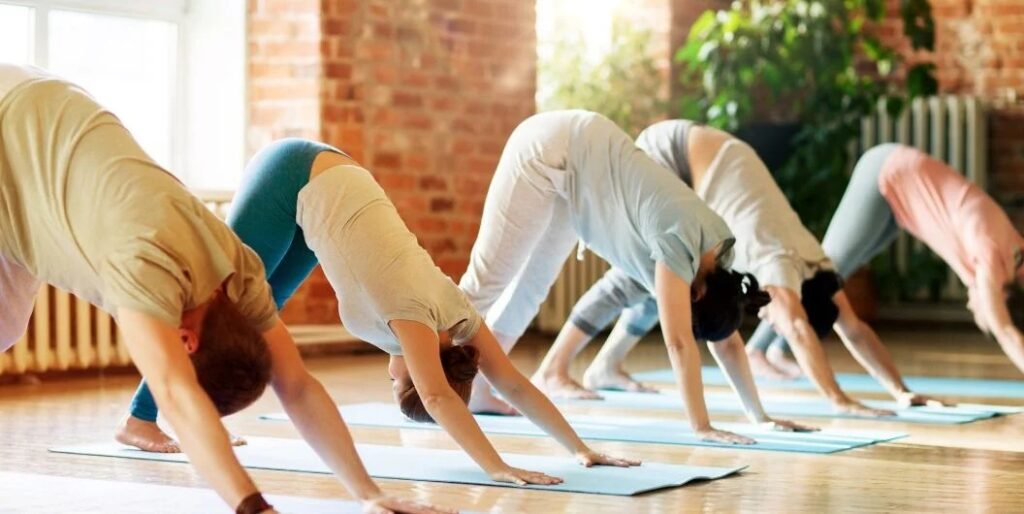
5 Best Yoga Poses for Back Pain Are you among the countless individuals seeking relief from persistent back pain? Look no further than the ancient practice of yoga. Harnessing the power of mindful movement and breath, yoga offers a myriad of poses specifically designed to alleviate discomfort and promote spinal health. In this guide, we’ll explore five of the most effective yoga poses for back pain, each offering unique benefits and gentle relief. Let’s embark on a journey towards greater flexibility, strength, and well-being. Here are 5 Best Yoga Poses for Back Pain Adho Mukha Svanasana (Downward-Facing Dog): Downward-Facing Dog, known as Adho Mukha Svanasana in Sanskrit, is a foundational yoga pose that stretches and strengthens the entire body, particularly the spine, shoulders, and hamstrings. By elongating the spine while drawing the hips upward and back, this pose helps improve posture, relieve tension, and promote a sense of rejuvenation and vitality. How to Do It: Start on hands and knees, wrists under shoulders, knees under hips. Tuck toes, exhale, lift hips for inverted V-shape. Press hands firmly, spread fingers, press heels down. Lengthen spine, relax neck, draw belly to thighs. Hold. Release by bending knees, return to starting position. Cat-Cow Pose (Marjaryasana-Bitilasana): Cat-Cow Pose, often practiced as a flowing sequence, gently mobilizes and stretches the spine while synchronizing breath with movement. The arching and rounding of the back in Cat-Cow helps alleviate tension, improve flexibility, and promote spinal health. How to Do It: Start on hands and knees, wrists under shoulders, knees under hips. Inhale, arch back into Cow Pose, lifting belly and gaze. Exhale, round back into Cat Pose, tucking chin and drawing belly in. Flow between Cat and Cow, syncing with breath. Inhale to Cow, exhale to Cat, repeating for flexibility. Child’s Pose (Balasana): Child’s Pose, or Balasana in Sanskrit, is a resting yoga posture that provides a gentle stretch to the back, hips, thighs, and ankles while promoting relaxation and stress relief. By surrendering the body to the floor and allowing the breath to deepen, Child’s Pose encourages a sense of calm and introspection during practice. How to Do It: Start on hands and knees, wrists under shoulders, knees under hips. Exhale, lower hips towards heels, rest forehead on mat or cushion. Extend arms forward, palms flat or facing up. Relax body, let chest sink, breathe slowly. Hold pose, focus on releasing tension in back, shoulders, and hips. Read More : 5 Yoga Asanas For Headache And Migraine Relief Cobra Pose (Bhujangasana): Cobra Pose, or Bhujangasana in Sanskrit, is a backbend yoga posture that strengthens the muscles of the back, arms, and shoulders while opening the chest and promoting spinal flexibility. By gently lifting the chest and engaging the back muscles, This yoga pose helps reduce stress, improve posture and stimulate energy flow throughout the body. How to Do It: Lie on your stomach with your legs extended and the tops of your feet pressing into the mat. Place your palms flat on the mat under your shoulders, keeping your elbows close to your body. Inhale, lift chest and head using back muscles, keep pelvis down. Press into hands, lift chest higher, elongate spine, draw shoulders away from ears. Hold, then exhale to release back down. Triangle Pose (Trikonasana): Triangle Pose, also known as Trikonasana in Sanskrit, is a standing yoga posture that stretches the hamstrings, hips, groins, and spine while strengthening the legs and core muscles. By extending the torso and reaching towards the sky with one arm while grounding through the feet, Triangle Pose cultivates balance, stability, and a sense of expansiveness in the body and mind. How to Do It: Stand at the top of your mat, feet 3-4 feet apart, facing forward. Turn right foot 90 degrees out, left foot slightly inward, heels aligned. Inhale, extend arms to shoulder height; exhale, reach right hand to shin, ankle, or block. Extend left arm up, creating a straight line from left foot to fingertips. Keep chest open, gaze at left thumb, hold, then inhale back to standing and repeat on the other side. In conclusion, incorporating these five yoga poses into your routine can be a transformative journey towards a healthier, pain-free back. By embracing the ancient wisdom of yoga, you not only address physical discomfort but also nurture a harmonious balance between your body and mind. Whether you’re a seasoned yoga practitioner or a beginner, these poses offer a gateway to improved flexibility, strengthened muscles, and a renewed sense of well-being. Embrace these yoga poses regularly to foster a harmonious blend of strength, flexibility, and tranquility in your wellness routine. Want to learn Yoga? Visit Body and Mind Yoga Center, we provide the best yoga classes in Dubai with a variety of lessons suited to fit your needs and preferences. Share this post : Previous PostNext Post More than 2 results are available in the PRO version (This notice is only visible to admin users) Most Recent Posts All Posts 5 Best Yoga Poses for Back Pain 5 Standing Yoga Poses for Beginners 5 Simple Yoga Poses for Beginners to Do Every Day Category Have Question Looking for the best yoga classes in Dubai? Visit our state-of-the-art yoga studio and center in Dubai for a rejuvenating and transformative experience. Call Us Now
5 Standing Yoga Poses for Beginners
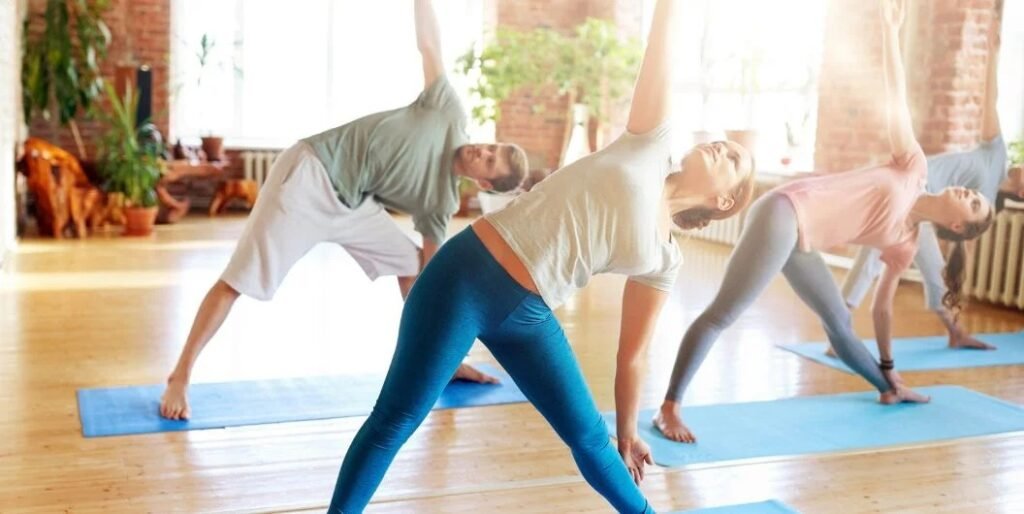
5 Standing Yoga Poses for Beginners Yoga, an ancient practice originating from India, offers a holistic approach to physical and mental well-being. For beginners, yoga serves as a gateway to improved flexibility, strength, and inner peace. Standing yoga poses hold particular significance as they form the foundation for building strength and balance. By engaging various muscle groups and promoting proper alignment, these poses not only enhance physical fitness but also cultivate mindfulness and stability, essential for a fulfilling yoga practice. What Are Standing Yoga Poses? Standing yoga poses are fundamental postures in yoga practice where practitioners maintain an upright stance while engaging various muscles and focusing on breath control. These poses often form the foundation of yoga sequences and help to improve balance, strength, and flexibility. Standing yoga poses promote stability, alignment, and mindfulness, serving as building blocks for more advanced asanas while offering physical, mental, and emotional benefits to practitioners of all levels. Benefits of Standing Yoga Poses Balance and Stability Standing yoga poses help train the body to balance by engaging various muscle groups, such as the glutes, hamstrings, quadriceps, and calf muscles. Strength and Flexibility These poses stretch and strengthen large muscle groups, including the legs, shoulders, and upper back, promoting overall strength and flexibility. Improved Posture Practicing standing yoga poses can help improve posture by aligning the body and maintaining proper blood circulation. Mindfulness and Kinesthetic Intelligence Standing Yoga poses improve kinesthetic intelligence, which helps to understand body mechanics and provides tangible training in mindfulness. Relaxation and Concentration: Certain standing poses, such as the Tree Pose (Vrksasana), can bring relaxation, balance, and improved concentration. Here are 5 Standing Yoga Poses for Beginners Mountain Pose (Tadasana) Mountain Pose is a foundational standing posture that embodies stability and alignment. In Tadasana, practitioners stand tall with feet rooted firmly into the ground, shoulders relaxed, and arms alongside the body, palms facing forward. How to Do It: Stand tall with your feet hip-width apart, grounding them firmly into the mat. Inhale deeply as you lift your arms overhead, palms facing each other or touching. Exhale slowly as you lengthen your spine, engaging your core muscles gently. Hold this position for a few breaths, feeling the strength and stability of the mountain within you. Benefits of Mountain Pose: Improves posture, strengthens legs, promotes awareness of body alignment, and cultivates a sense of grounding and presence. Read More : Top 5 Yoga Poses For Effective Weight Loss Warrior 1 (Virabhadrasana 1) Warrior 1 is a powerful standing pose that builds strength and focus. With one foot forward and the other back, hips square to the front, arms raised overhead, and gaze forward, practitioners emulate the strength of a warrior. How to Do It: Begin standing at the top of your mat with your feet hip-width apart and your arms relaxed by your sides. Step your left foot back, keeping it at a 45-degree angle, and bend your right knee to stack it directly over your right ankle. Inhale deeply as you raise your arms overhead, palms facing each other, and keep your shoulders relaxed away from your ears. Exhale as you sink deeper into your right knee, grounding through the outer edge of your left foot, and lengthen through your spine, lifting your chest towards the sky. Hold the pose for a few breaths before switching sides. Benefits of Warrior 1 Pose: Strengthens legs, arms, and core, improves balance and stability, stretches the chest and shoulders, and instills confidence and determination. Forward Fold (Uttanasana) Forward Fold is a calming standing pose that gently stretches the entire back body. In Uttanasana, practitioners fold forward from the hips, allowing the upper body to release towards the legs, while keeping the spine long. How to Do It: 1.Stand tall with your feet hip-width apart and parallel to each other. 2.As you inhale, raise your arms overhead, lengthening your spine and reaching towards the sky. 3.On the exhale, hinge at your hips and slowly fold forward from your hips, keeping your spine long. Allow your hands to reach towards the floor or grab onto your shins or ankles, depending on your flexibility. 4.Hold the forward fold for a few breaths, allowing your head to hang heavy and your spine to lengthen with each exhale. Feel the stretch in your hamstrings and lower back. Benefits Forward Fold (Uttanasana): Releases tension in the spine, stretches hamstrings and calves, calms the mind, and improves circulation to the brain. Triangle Pose (Utthita Trikonasana) Triangle Pose is a dynamic standing pose that stretches and strengthens the entire body. In Utthita Trikonasana, practitioners extend one leg sideways, reach one arm down to the ankle or floor, and extend the opposite arm towards the sky. How to Do It: Begin standing at the top of your mat with your feet about hip-width apart. Inhale deeply as you step your feet wide apart, positioning them so that your heels are aligned with each other. Your front foot should be pointing forward, while your back foot is at a slight angle, around 45 degrees. Exhale as you extend your arms out to the sides at shoulder height, parallel to the floor. Inhale again, then exhale as you hinge at your hip and reach your front hand towards the front of the mat, lowering it down to your shin, ankle, or the floor. Simultaneously, extend your other arm straight up towards the ceiling, creating a straight line from your fingertips to your extended heel. Keep your torso open, and your chest facing forward. Hold the pose for a few breaths. Benefits Triangle Pose (Utthita Trikonasana): Stretches and strengthens legs, opens hips and chest, improves balance and stability, stimulates abdominal organs, and enhances spinal flexibility. Tree Pose (Vrksasana) Tree Pose is a balancing posture that cultivates focus and inner strength. In Vrksasana, practitioners ground one foot into the inner thigh or calf of the opposite leg, while hands are either at heart center or extended overhead. How to Do It: Begin standing tall with your feet hip-width apart and
5 Simple Yoga Poses for Beginners to Do Every Day

5 Simple Yoga Poses for Beginners to Do Every Day Embarking on a journey into the world of yoga can be both exciting and rewarding, especially for beginners. Yoga not only enhances physical flexibility and strength but also promotes mental well-being and stress relief. If you’re new to the practice, incorporating a few simple yet effective yoga poses into your daily routine can make a significant difference. In this blog post, we’ll explore five beginner-friendly yoga poses that you can easily incorporate into your daily schedule for a healthier and more balanced life. Why Should You Incorporate Basic Yoga Poses Into Your Daily Routine? Incorporating basic yoga poses into your daily routine offers a myriad of benefits for both physical and mental well-being. Yoga poses enhance flexibility, strengthen muscles, and improve posture. Also, integrating yogic breathing techniques promotes relaxation, reduces stress, and enhances mindfulness. Embracing this holistic approach fosters a harmonious balance between body and mind, promoting overall health and a sense of inner calm in the midst of daily challenges. Benefits of a Daily Yoga Practice Improved Flexibility: Yoga enhances flexibility by stretching and lengthening muscles. Increased Strength: Various poses build and tone muscles, improving overall strength. Enhanced Posture: Yoga encourages awareness of body alignment, leading to better posture. Stress Reduction: Mindful breathing and meditation in yoga reduce stress and promote relaxation. Enhanced Circulation: Poses and movements improve blood flow, benefiting overall cardiovascular health. Better Sleep: Relaxation techniques in yoga contribute to improved sleep quality. Here are 5 Simple Yoga Poses for Beginners Cat Pose (Marjaryasana): Begin your yoga routine with the Cat Pose, also known as Marjaryasana. This gentle pose is an excellent way to warm up your spine and release tension in the neck and back. The Cat Pose is not only a great physical warm-up but also helps center your mind and focus on your breath. How to Do It 1.Start on your hands and knees in a tabletop position. 2.Inhale as you arch your back, dropping your belly towards the mat, and lift your head and tailbone towards the ceiling. 3.Exhale as you round your back, tucking your chin to your chest and drawing your navel in towards your spine. 4.Repeat this flow, moving between the arched and rounded positions for a few breaths. Cow Pose (Bitilasana): Following the Cat Pose, seamlessly transition into the Cow Pose, or Bitilasana. This pose complements the Cat Pose, creating a fluid movement that continues to warm up your spine and stretch your torso. The Cat-Cow flow enhances flexibility in the spine, promotes circulation, and helps alleviate any stiffness or tension in the back. How to Do It 1.From the Cat Pose position, inhale as you arch your back, drop your belly towards the mat, and lift your head and tailbone towards the ceiling. 2.Lift your chest and broaden your shoulders, allowing your gaze to lift slightly. Low Lunge (Anjaneyasana): Moving on to standing poses, the Low Lunge, or Anjaneyasana, is a fantastic way to stretch and strengthen the legs, hips, and thighs. The Low Lunge is an excellent pose for beginners to build leg strength and improve flexibility in the hips. How to Do It 1.Start in a standing position with your feet together. 2.Step one foot back, lowering the knee to the mat. 3.Ensure the front knee is directly above the ankle, creating a 90-degree angle. 4.Sink your hips forward and down, feeling a stretch in the hip flexors. 5.Lift your arms overhead or place your hands on your front knee for balance. Locust Pose (Salabhasana): To engage your back muscles and strengthen the entire spine, incorporate the Locust Pose, or Salabhasana, into your routine. This pose targets the muscles in the back while improving posture. The Locust Pose is an empowering pose that helps build strength in the lower back, buttocks, and legs. It’s essential to engage your core muscles while performing this pose to protect your lower back. How to Do It 1.Lie on your stomach with your arms alongside your body, palms facing up. 2.Inhale as you lift your head, chest, arms, and legs off the mat, using the strength of your back muscles. 3.Keep your gaze down to maintain the natural alignment of your neck. Seated Forward Bend (Paschimottanasana): To wind down your yoga routine, finish with the Seated Forward Bend, or Paschimottanasana. This pose stretches the entire backside of your body, from the hamstrings to the spine.The Seated Forward Bend is a calming pose that promotes relaxation, relieves stress, and provides a gentle stretch to the spine and hamstrings. How to Do It 1.Sit on the mat with your legs extended in front of you. 2.Inhale as you lengthen your spine, and exhale as you hinge at the hips to fold forward. 3. Reach for your feet or shins, keeping your back straight. 4.If your hamstrings are tight, you can bend your knees slightly. Conclusion: Incorporating these yoga poses into your daily routine can be a transformative step towards improving your physical and mental well-being. Whether you’re a beginner or an experienced yogi, dedicating time each day to these poses can enhance your flexibility, build strength, and bring a sense of peace and mindfulness into your life. Remember to listen to your body, breathe deeply, and enjoy the journey of self-discovery through yoga. Namaste! Embrace these yoga poses regularly to foster a harmonious blend of strength, flexibility, and tranquility in your wellness routine. Want to learn Yoga? Visit Body and Mind Yoga Center, we provide the best yoga classes in Dubai with a variety of lessons suited to fit your needs and preferences. Share this post : Previous PostNext Post More than 2 results are available in the PRO version (This notice is only visible to admin users) Most Recent Posts All Posts 5 Simple Yoga Poses for Beginners to Do Every Day Top 5 Yoga Poses for Effective Weight Loss 5 Yoga Poses for Managing Irregular Periods Category Have Question Looking for the best yoga classes in Dubai? Visit our state-of-the-art yoga studio and center in Dubai for a rejuvenating and transformative experience. Call
